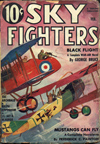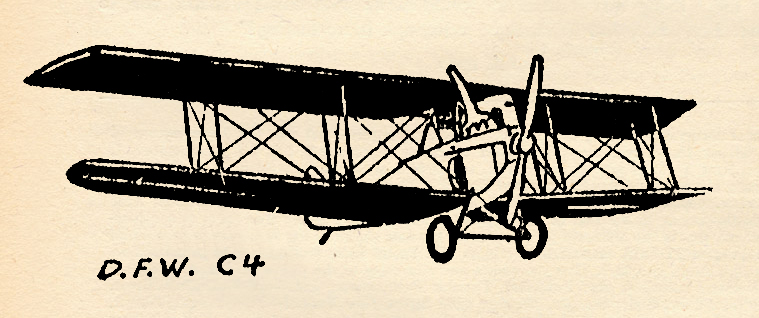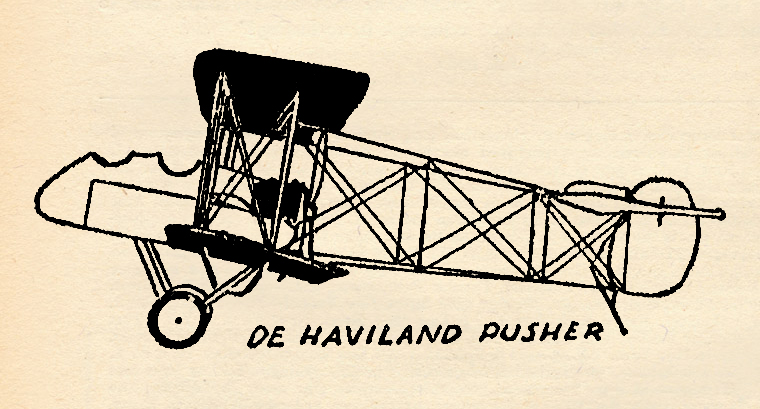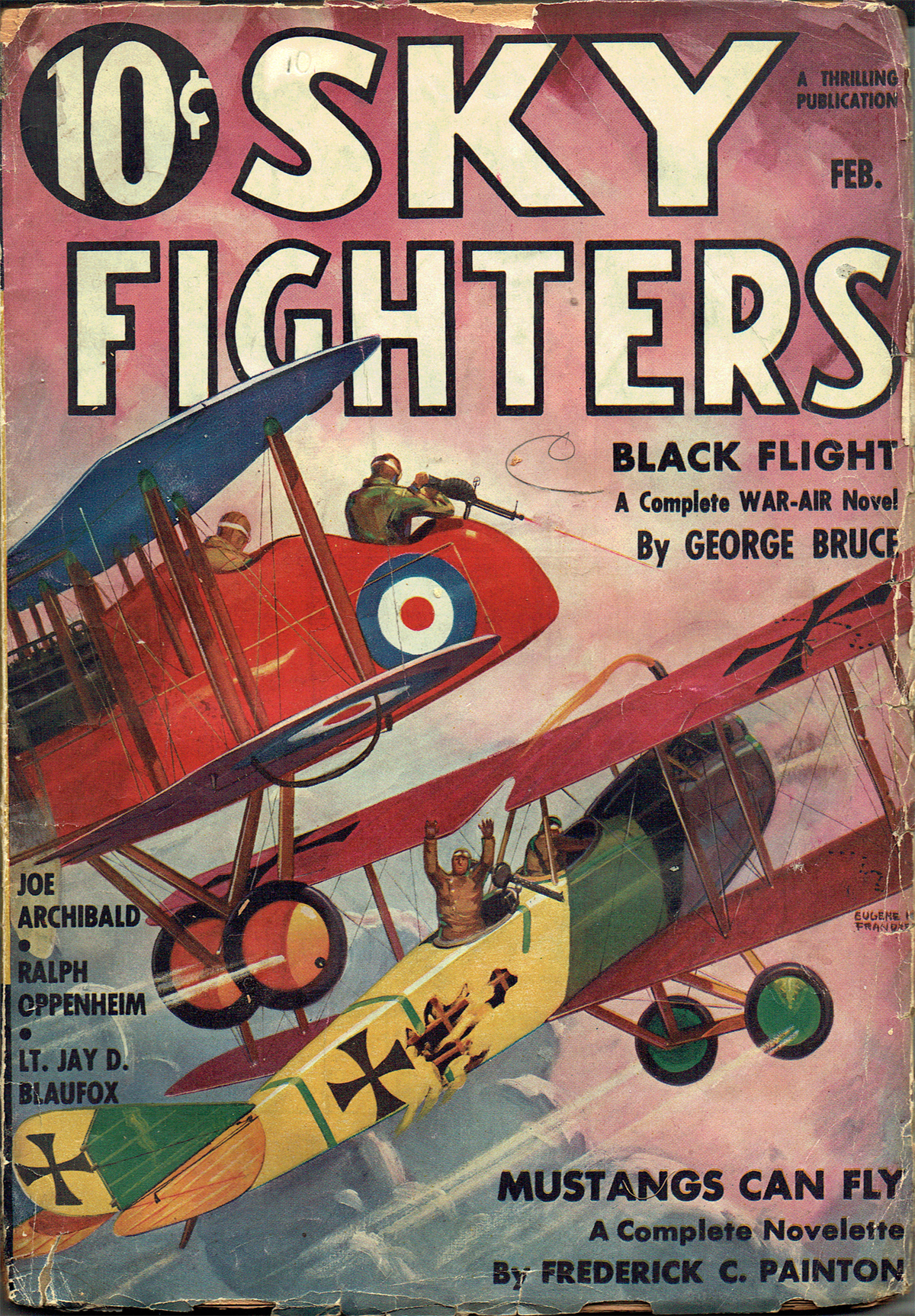“Sky Fighters, February 1936″ by Eugene M. Frandzen
Eugene M. Frandzen painted the covers of Sky Fighters from its first issue in 1932 until he moved on from the pulps in 1939. At this point in the run, the covers were about the planes featured on the cover more than the story depicted. Mr. Frandzen features a battle between a De Haviland Pusher and a German D.F.W. C4 on the February 1936 cover!
The Ships on the Cover
THE De Haviland planes will always  be remembered in the United States by the number of D.H.s this country ordered on such a grand scale when we entered the war. The early D.H.s are not given the credit they deserve because Capt. Geoffrey De Haviland might never have had a chance to build later models if his early one had not been so good. It combatted the Fokker menace back in 1916 when the Germans had things their own way in the air. When these D.H. Pusher biplanes came along the Allied airmen began to take heart. At last they had a machine that could outfly the Fokker which was the scourge of the Front. The D.H. Pusher was similar to the earlier F.E.s but much superior in speed. They had only two bays of struts and were simplified considerably in the tail boom construction.
be remembered in the United States by the number of D.H.s this country ordered on such a grand scale when we entered the war. The early D.H.s are not given the credit they deserve because Capt. Geoffrey De Haviland might never have had a chance to build later models if his early one had not been so good. It combatted the Fokker menace back in 1916 when the Germans had things their own way in the air. When these D.H. Pusher biplanes came along the Allied airmen began to take heart. At last they had a machine that could outfly the Fokker which was the scourge of the Front. The D.H. Pusher was similar to the earlier F.E.s but much superior in speed. They had only two bays of struts and were simplified considerably in the tail boom construction.
The British airmen in the bucket seat of the D.H. Pusher on the cover had confidence in their machine when it proudly paraded its course through the skies. They had a speedy ship with a front gun to blaze the Germans from the air when those hitherto superior, overconfident airmen darted across Allied territory for a looksee at all the preparations being made on the ground.

On this occasion they met not one of Mr. Fokker’s products but a German D.F.W. C4 (Deutsche Flugzeug Werke). This two-seater carried a 200 h.p. Benz motor. The C4 had radiators on the sides of the fuselage directly in the slipstream which made it possible to use a small radiator to run a big engine, by which trick the Germans gained efficiency. The wings were not swept back but had dihedral.
Funny-Looking, But—
Funny-looking crates, those old flying bird cages, but some pilots who flew them still brag about them and swear that it was a wonderful sensation to fly a pusher. Of course, there was the uncomfortable feeling of having a heavy engine nestling behind your seat to squash you flatter than a pancake in a crackup.

When the tractors replaced the pushers all but a few aviation experts predicted that pushers would never more waddle through the air. But along toward the end of the war the British Vickers Co. came out with a single-seater Pusher with two front guns. It was powered with a better engine than the old Pushers used and could tick off over 120 miles per hour low down; and low down was the place it did its job, right over the German trenches. It was built for ground strafing and it was a honey to fly. Again the anti-pusher crowd said “It’s a freak, a last try using an obsolete principle. There ain’t no such thing as a good pusher.”
That old Vickers Vampire was just about 
the swan song of the pushers for many 
years. And then, nearly fifteen years after
 the end of the World War the French 
Hanriot Company brought out one of the
speediest, slickest-looking fighters of the
 year, the Hanriot H-110-C1. And believe it
 or not, it was a PUSHER that could slice
 through the air at the very nice speed of
 220 m.p.h.
Lightning-Quick Action
The German D.F.W. on the cover had a pilot who had knocked down several of the earlier slower moving pushers. He saw an easy kill and got careless. One moment the D.H. Pusher was in front of him. The next it had pulled a lightning-like maneuver which no ship other than a tractor had hitherto been capable of Lewis slugs cracked and rattled into the German ship, knocking the front gun’s firing mechanism cock-eyed. Then the stream of lead slid back and ripped a section of canvas from the observer’s pit. That worthy never got in a shot, his hands were too high in the air clawing at the clouds.
The British gunner pointed towards the Allied rear lines. The German pilot nodded his head and slanted his ship down, swearing solemnly that if he ever escaped and got into the air again he’d be mighty careful to keep out of the way of pushers.

Sky Fighters, February 1936 by Eugene M. Frandzen
(The Ships on The Cover Page)




